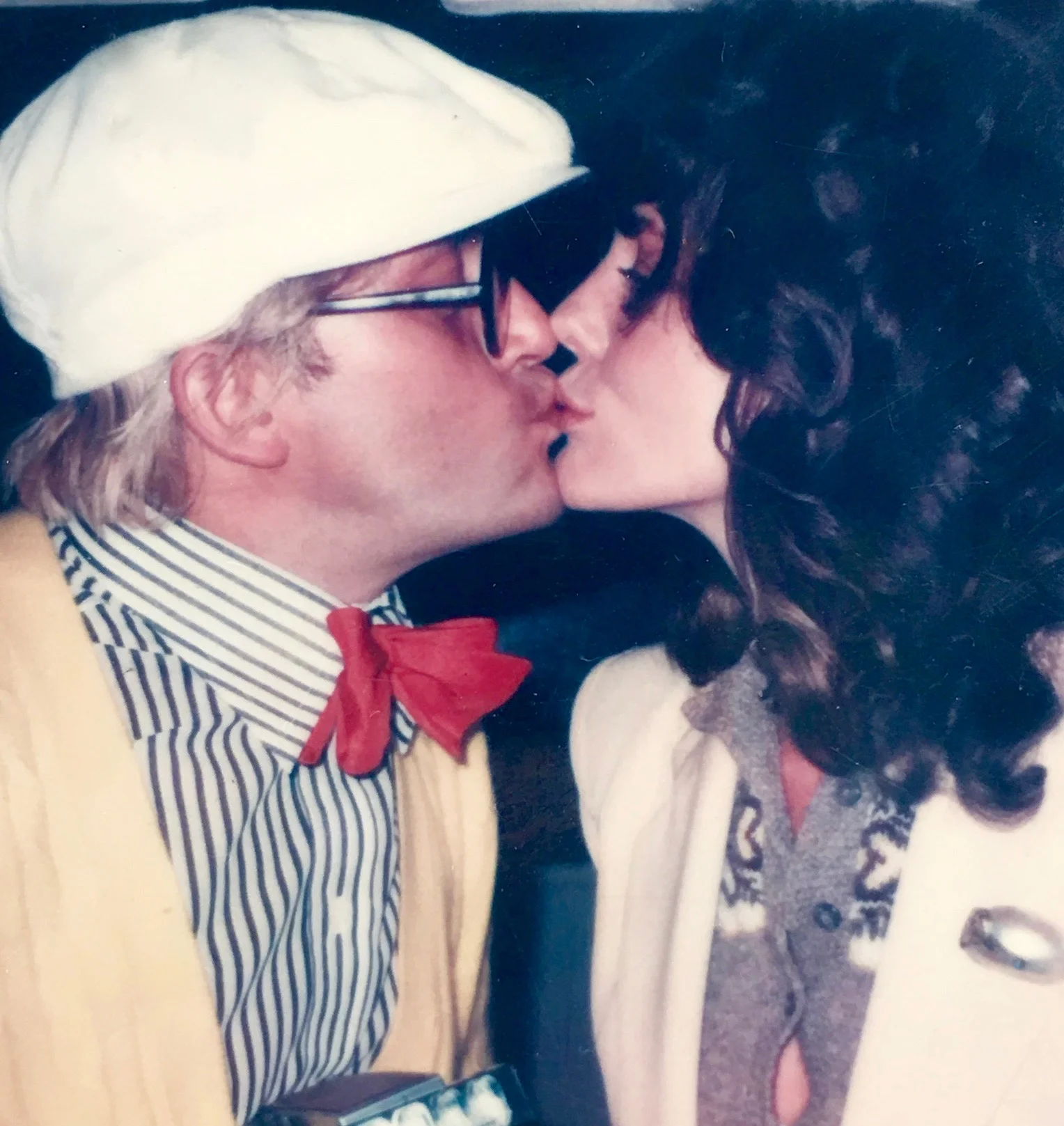David Hockney Paints Me
I first got to know David Hockney at director Tony Richardson’s (“Tom Jones,” “The Charge of the Light Brigade”) house on King’s Road, above the Sunset Strip. Tony was an early collector and in his high-beamed living room David’s big "swimming pool" canvases filled the walls– several of them painted at Le Nid du Duc, Richardson’s farmhouse in the South of France.
OZZIE CLARKE AND CELIA BIRTWELL - Hockney
It was 1976, not long after I moved into my first L.A. apartment, a tragic one-bedroom closet in Westwood, with no furniture. I’d been a fan of Hockney’s work since my London days (seeing the painting above of Celia Birtwell and Ozzie Clark while buying clothes in Ozzie's Chelsea boutique). So I was excited to go to Hockney's opening at the Nick Wilder gallery in West Hollywood.
The invitation for “tea,” drawn by David, had been printed up on T - shirts. People were already grabbing them when I arrived, as Hockney, grinning, his flat white cap pushed low on his brow, handed them out. “C’mon, luv,” he said to me, with his familiar Geordie twang, “Have one!” But by the time I pushed through, there were none left. I was wearing my current uniform: jeans and a plain white T. Suddenly, David grabbed a colored marker – or several of them – and drew the invitation on me. Back and front. Incredible. I owned my first Hockney – and I was wearing it!
MY 40 YEAR OLD HOCKNEY T-SHIRT
After that, I got to know David at Tony’s famous Sunday lunches.
I was part of the English ex-pat crowd. The poet Steven Spender might be there, writer Christopher Isherwood (so charming with his watery, mouse-brown eyes), Tony’s daughters, Natasha and Joely, and Hockney.
WRITER CHRISTOPHER ISHERWOOD
JOELY AND NATASHA RICHARDSON
Tony, hawkish and excitable as ever, loved to create drama. He had a ferocious pet Toucan, for example, not very well chained to a tree branch in the kitchen. And when the bird took nips at the passing guests – which it did frequently – Richardson, gleefully indignant, would shriek, “Well, don’t TORMENT him, then!”
DIRECTOR TONY RICHARDSON
Tony was passionate about Art. And at lunch he and David would discuss art, or, for the benefit of the guests, argue about art. “Could one compare the camera lens with the scope of human sight?” Did movies portray what we really see? – “Yes, of course,” according to Tony. Or was Picasso’s Cubist vision the true one? – as David kept insisting. He would then break into his big friendly Yorkshire laugh and start sketching one-eyed figures across the tablecloth.
Later, I went to visit David's studio on Woodrow Wilson Drive. There was a large photo of the Queen on the wall. The furniture was painted pink and blue, and he’d put wavy blue lines on the bottom of his pool to mimic his paintings. Art imitating Art.
HOCKNEY PAINTING A POOL
There were also hundreds of Polaroids littering the floor. He’d just started doing his photo-collages—his “joiners,” as he liked to call them—about which, at the next lunch, Tony would remark triumphantly, his knees banging together, “And I thought you said photography as art was PATHETIC!”
Riotous laughter from the guests, accompanied by screeching from the Toucan in the kitchen.
One of HOCKNEY'S POLAROID PICTURES
My second Hockney, I bought from the Corcoran Gallery, a drawing of the curator Henry Geldzahler.
It was $650, a fortune for me then (my apartment was $150 a month), and I had to pay it off later with the money I earned acting in another lamentable movie, Tintorera, the Mexican version of “Jaws”.












